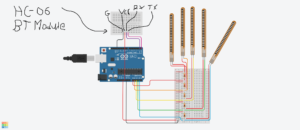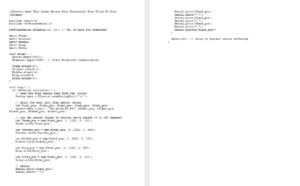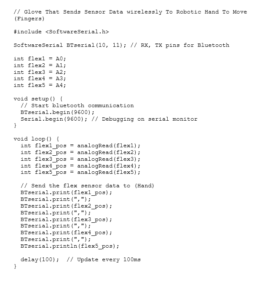How is learning to use Fusion 360 progressing when working with students?
In our coding class, students are not just learning to code; they are embarking on a journey of creativity and innovation. Through the use of Fusion 360, they are transforming their ideas into tangible projects, and one of the most exciting endeavors is the development of a robotic hand.
Progress on the Robotic Hand
Our students have made remarkable progress on the robotic hand project. This intricate project involves designing and building both the hand and the forearm, each housing essential components that bring the robotic hand to life. Below is a video of what has been build at this time.
The Forearm
The forearm is a critical part of the project, housing several key components:
- Micro servo metal geared motors: These motors provide the necessary movement and precision.
- Arduino: The brain of the operation, controlling the various functions.
- Nano Expansion Board: Expands the capabilities of the Arduino.
- Breadboard: Allows for easy prototyping and testing of circuits.
- Rocker Switches: Enable manual control of the robotic hand.
- Battery Clips: Provide power to the entire system.
One student is dedicated to working on the forearm, ensuring that all these components are integrated seamlessly. Here are some of his notes/graphics on how he is going to achieve his project objectives.

Created by Colten

Created by Colten
The Hand
Another student is focused on building the hand itself. This involves designing the fingers and ensuring they can move accurately and smoothly. The hand must be both functional and durable, capable of performing various tasks. The goal at this time by the team is that the majority of the hand is built with standard PLA material. The “Tendons” in the robotic hand will be of TPU Material. You are probably saying what is TPU? It is a special kind of plastic that can bend and stretch like rubber. Imagine you have a toy that is really strong and can bend without breaking. So, the intent is to have the micro servos close the fingers and the TPU material will open the fingers. That way we only have to use half of the amount of servos to move the fingers.
Created by Ranie
Coding and Connectivity
The third student is working on the code that will connect a glove worn by a person to the robotic hand via Bluetooth. This code allows the wearer to manipulate the robotic hand, making it a truly interactive and responsive device. The coding process is complex, requiring a deep understanding of both hardware and software.

Created by Josh

Created by Josh
Creativity and Innovation
What makes this project truly special is that it is designed entirely from scratch. None of these parts existed until our students used their creativity and ingenuity (concept phase) to bring the robotic hand and forearm to reality. They are learning not just to follow instructions but to innovate and create. It really encourages students to embrace inquiry based learning.
Teamwork and Collaboration
One of the most exciting aspects of this project is the teamwork involved. Each student has a specific role, but they must collaborate to ensure the forearm and hand work together seamlessly. This teaches them valuable skills in communication, problem-solving, and cooperation.
Conclusion
Our coding class is more than just learning to code; it is about empowering students to think creatively, work collaboratively, and innovate. The progress on the robotic hand project is a testament to their hard work and dedication. We are excited to see how they continue to develop and refine their skills, and we look forward to the amazing projects they will create in the future. I can say enough how using the Fusion 360 has really challenged students in a way that they are not just users of technology but rather creators of technology.
